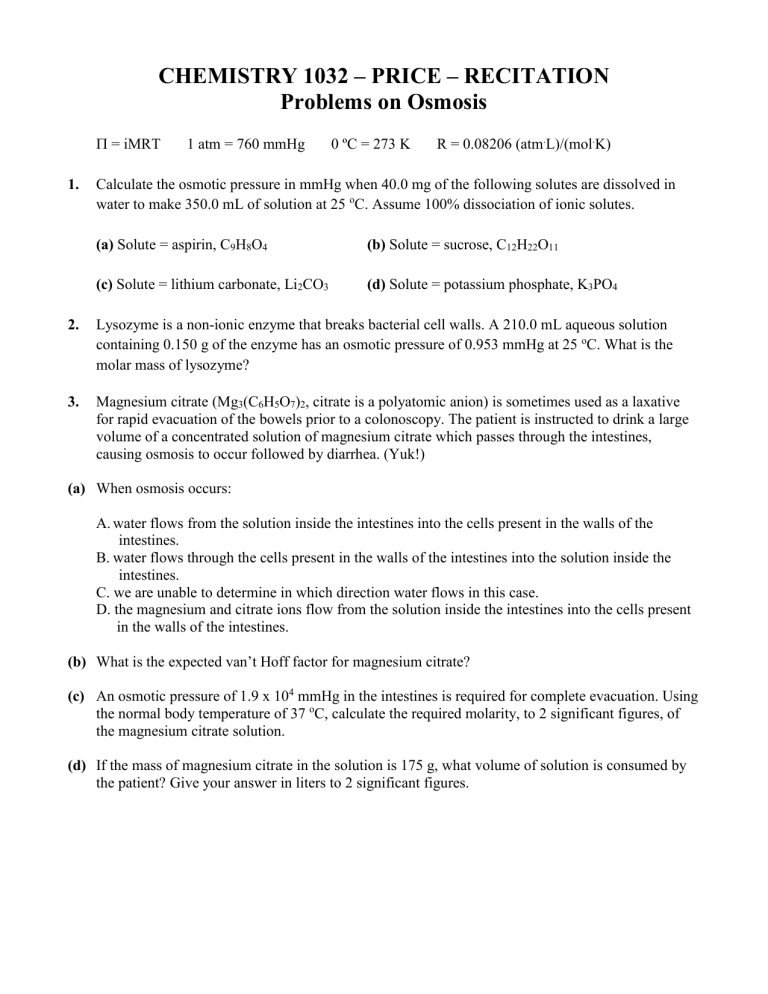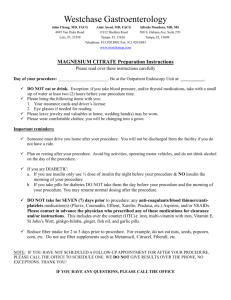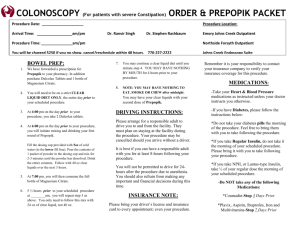Recit Worksheet #4 - SP19
advertisement

CHEMISTRY 1032 – PRICE – RECITATION Problems on Osmosis = iMRT 1. Calculate the osmotic pressure in mmHg when 40.0 mg of the following solutes are dissolved in water to make 350.0 mL of solution at 25 oC. Assume 100% dissociation of ionic solutes. 1 atm = 760 mmHg 0 ºC = 273 K R = 0.08206 (atm.L)/(mol.K) (a) Solute = aspirin, C9H8O4 (b) Solute = sucrose, C12H22O11 (c) Solute = lithium carbonate, Li2CO3 (d) Solute = potassium phosphate, K3PO4 2. Lysozyme is a non-ionic enzyme that breaks bacterial cell walls. A 210.0 mL aqueous solution containing 0.150 g of the enzyme has an osmotic pressure of 0.953 mmHg at 25 oC. What is the molar mass of lysozyme? 3. Magnesium citrate (Mg3(C6H5O7)2, citrate is a polyatomic anion) is sometimes used as a laxative for rapid evacuation of the bowels prior to a colonoscopy. The patient is instructed to drink a large volume of a concentrated solution of magnesium citrate which passes through the intestines, causing osmosis to occur followed by diarrhea. (Yuk!) (a) When osmosis occurs: A. water flows from the solution inside the intestines into the cells present in the walls of the intestines. B. water flows through the cells present in the walls of the intestines into the solution inside the intestines. C. we are unable to determine in which direction water flows in this case. D. the magnesium and citrate ions flow from the solution inside the intestines into the cells present in the walls of the intestines. (b) What is the expected van’t Hoff factor for magnesium citrate? (c) An osmotic pressure of 1.9 x 104 mmHg in the intestines is required for complete evacuation. Using the normal body temperature of 37 oC, calculate the required molarity, to 2 significant figures, of the magnesium citrate solution. (d) If the mass of magnesium citrate in the solution is 175 g, what volume of solution is consumed by the patient? Give your answer in liters to 2 significant figures.




